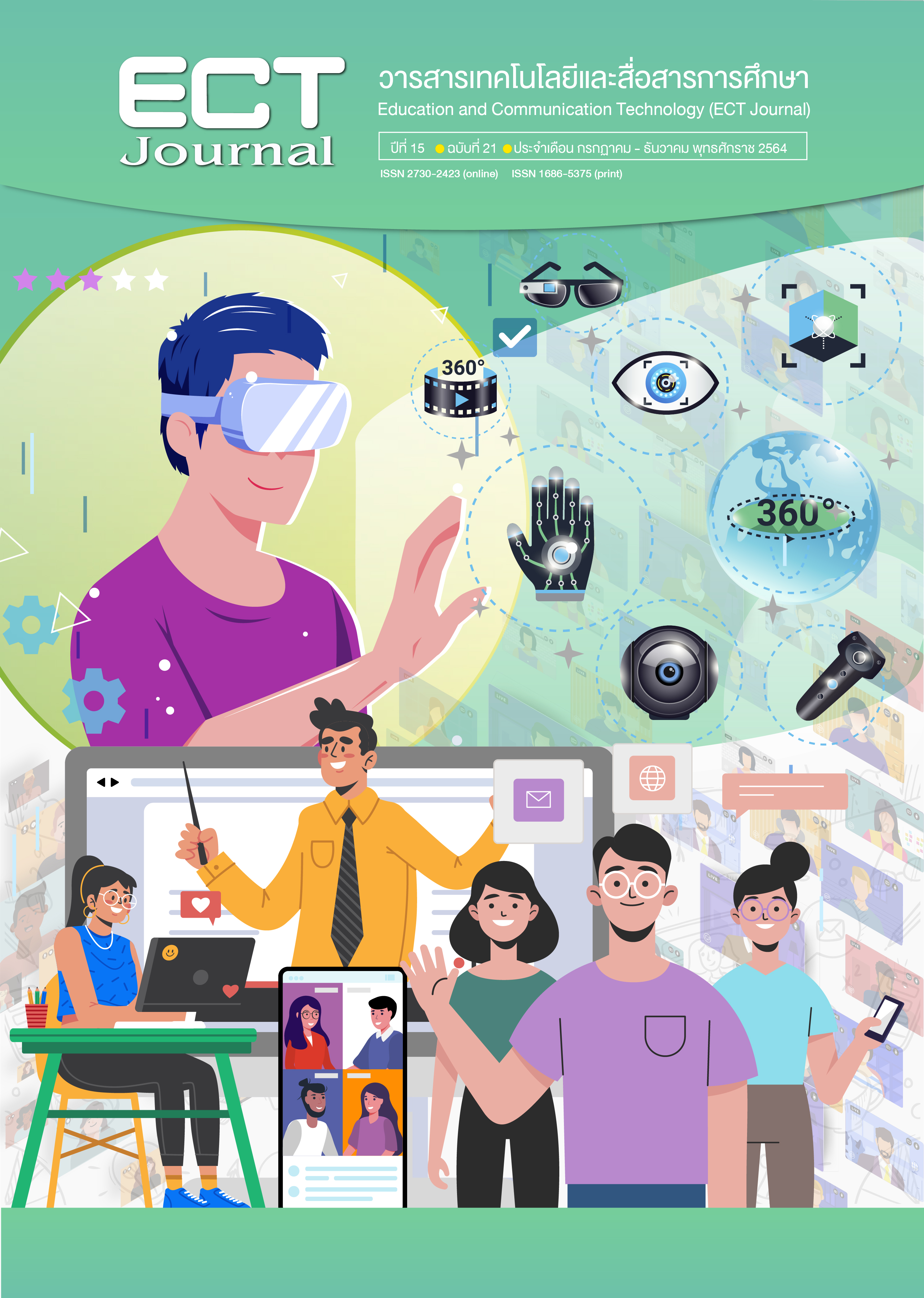The Development of Mobile Learning Model for Sukhothai Thammathirat Open University Students
Keywords:
mobile learning, open university, distance learningAbstract
The purpose of this research was to develop a mobile learning model for Sukhothai Thammathirat Open University students. Research instruments were: 1) the questionnaire for asking about problems and need analysis about distance learning via mobile learning of STOU’s students, STOU’s instructors and STOU’s officers 2) The evaluation form for developing the mobile learning model for the Sukhothai Thammathirat Open University students evaluated by experts. The data were analyzed using percentage, mean, and standard deviation.
The results of this research revealed that: The designed mobile learning model for the Sukhothai Thammathirat Open University students consists of eight elements: 1) Instruction Team, 2) Learners, 3) Devices, 4) The Mobile Learning Management System, 5) Resources, 6) Activity, 7) Communications, and 8) Evaluation. There were five steps of the learning process: 1) Orientation, 2) Learning, 3) Collaborative Activity, 4) m-Tutorial, and 5) Self-Assessment.
References
บุญเรือง เนียมหอม. (2540). การพัฒนาระบบการเรียนการสอนทางอินเทอร์เน็ตในระดับอุดมศึกษา [วิทยานิพนธ์ปริญญาดุษฎีบัณฑิต ไม่ได้ตีพิมพ์]. จุฬาลงกรณ์มหาวิทยาลัย.
ผกาสิน พูนพิพัฒน์, ภัทรชัย ลลิตโรจน์วงศ์, และพิชัย สดภิบาล. (2546). องค์ประกอบที่ต้องคำนึงถึงในการพัฒนา e-Learning. NECTEC, 10(มกราคม-กุมภาพันธ์), 23-32.
มงคล แก้วจันทร์. (2545). การออกแบบระบบเทคโนโลยีสารสนเทศเพื่อใช้ในการเรียนการสอน. Internet Magazine, 6(มิถุนายน), 39-44.
วิจิตร ศรีสอ้าน. (2529). การศึกษาทางไกล. มหาวิทยาลัยสุโขทัยธรรมาธิราช.
วิภาดา แก้วคงคา. (2560). การพัฒนารูปแบบโมบายเลิร์นนิงแบบร่วมมือร่วมกับการใช้เหรียญตราดิจิทัลเพื่อเสริมสร้างทักษะการทำงานเป็นทีมของนักเรียนชั้นประถมศึกษาปีที่ 6 [วิทยานิพนธ์ปริญญามหาบัณฑิต, จุฬาลงกรณ์มหาวิทยาลัย]. คลังปัญญาจุฬาฯ. http://cuir.car.chula.ac.th/handle/123456789/58284
ศัลยพงศ์ วิชัยดิษฐ์. (2559). การพัฒนารูปแบบการเรียนการสอนโดยใช้คอมพิวเตอร์สนับสนุนการเรียนรู้ร่วมกันผ่านคอมพิวเตอร์พกพา สำหรับนักศึกษาระดับปริญญาตรี [วิทยานิพนธ์ปริญญาดุษฎีบัณฑิต ไม่ได้ตีพิมพ์]. มหาวิทยาลัยเกษตรศาสตร์.
สาโรจน์ โศภีรักข์. (2558). M-Learning. Academic Journal Bangkokthonburi University, 3(2), 32-42. http://www.dpu.ac.th/dpurc/assets/uploads/magazine/3t13m5eqrpwtows.pdf
Anderson, T. (2008). Teaching in an online learning context. In T. Anderson (Ed.), The theory and practice of online learning (2nd ed., pp. 343-365). Athabasca University Press.
Cercone, K. (2008). Characteristics of adult learners with implications for online learning design. AACE Journal, 16(2), 137-159.
Crompton, H. (2013). A historical overview of mobile learning: Toward learner-centered education. In Z. L. Berge & L. Y. Muilenburg (Eds.), Handbook of mobile learning (pp. 3-14). Routledge.
Koole, M. L. (2009). A model for framing mobile learning. In M. Ally (Ed.), Mobile learning: Transforming the delivery of education and training (pp. 25-47). Athabasca University Press.
Nadire Cavus, N., & Uzunboylu, H. (2009). Improving critical thinking skills in mobile learning. Procedia Social and Behavioral Sciences, 1, 434-438. https://doi.org/10.1016/j.sbspro.2009.01.078
Downloads
Published
How to Cite
Issue
Section
License
Copyright (c) 2021 มหาวิทยาลัยสุโขทัยธรรมาธิราช

This work is licensed under a Creative Commons Attribution-NonCommercial-NoDerivatives 4.0 International License.
1. ทรรศนะและข้อคิดเห็นใด ๆ ที่ปรากฏอยู่ในวารสาร ECT Education and Communication Technology Journal เป็นของผู้เขียนโดยเฉพาะ สำนักเทคโนโลยีการศึกษา มหาวิทยาลัยสุโขทัยธรรมาธิราช และกองบรรณาธิการไม่จำเป็นต้องเห็นพ้องด้วย
2. กองบรรณาธิการของสงวนลิขสิทธิ์ในการบรรณาธิการข้อเขียนทุกชิ้น เพื่อความเหมาะสมในการจัดพิมพ์เผยแพร่






